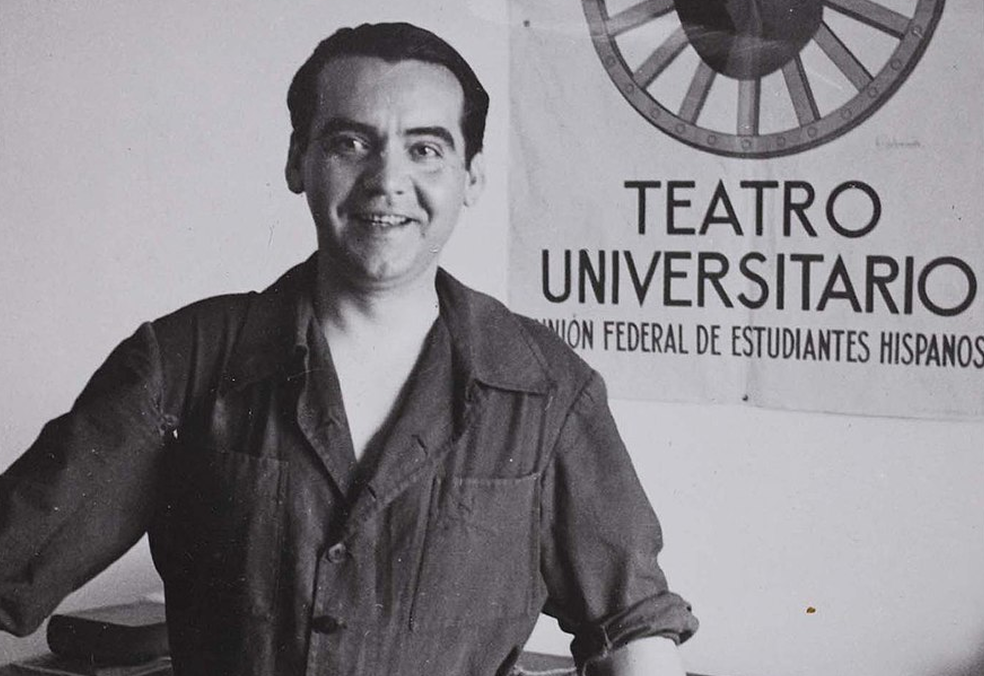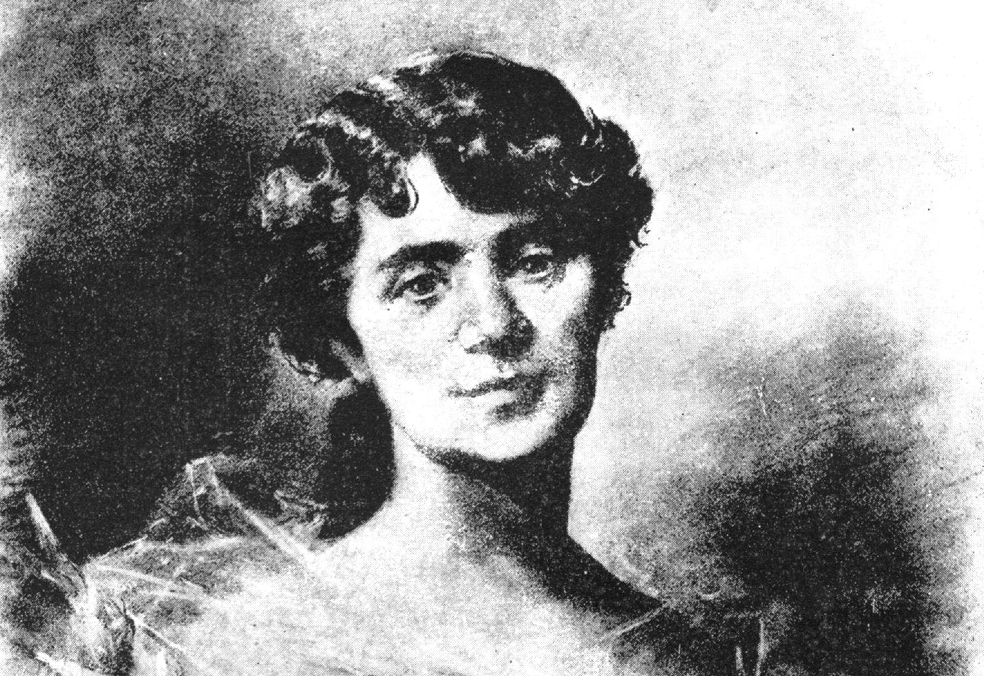Literary references
The extensive tradition, importance and devotion that the “Virgen de la Barca” Festival has aroused has led to its forging its space within literary creations.
Among the references that are known are great writers such as Federico García Lorca or the universal Rosalía de Castro.
In the case of the poet from Granada, his inspiration for the “Virgen de la Barca” Sanctuary may have arisen from the trips he made to Galicia in 1932, where he was able to imbue himself with Galician culture and traditions. From these visits, six poems emerged that García Lorca wrote in Galician.

He gave the writings to Eduardo Blanco Amor – one of the great figures of Galician literature – so that he could revise and correct them. Finally, the verses were published by the Nós publishing company in 1935 (in volume LXXIII).
Under the title Romaxe de Nosa Señora da Barca (Festival of Our Lady of A Barca), the writer from Granada refers to the fact that the image of the Saint was transported on a cart pulled by four oxen, a reference that did not correspond to reality. Even so, the fact that he created an ad hoc poem for the event denotes its importance at the time.
FEAST OF THE VIRXE DA BARCA
O revel, revelers
for the little Virgin
who brings her boat ashore!
The Virgin is small, stone.
Silver is her crown.
Blond the four oxen
that draw her in their cart.
Doves of glass draw
rain to the mountain.
The dead, draped in mist,
drift along the cartpath.
Virgin, leave your face here
in the cows’ sweet eyes.
And wear upon your cape
flowers from a shroud.
Above Galicia’s crown
dawn begins to sigh.
The Virgin looks
from her door toward the sea.
O revel, revelers
for the little Virgin
who brings her boat ashore!
For her part, Rosalía de Castro (1837-1885) did attend the “Virgen de la Barca” Festival and the event left her very surprised and marked.
So much so that in Cantares Gallegos she dedicated a poem of 226 octosyllabic verses, with assonant rhyme in the pairs, romance style, to the event. In addition, her visit to the area and Costa da Morte also served as inspiration for her novel La hija del Mar, published in 1959.
The poem begins with a traditional cantiga de Nosa Señora da Barca (Our Lady of the Boat) and in it she describes how the event unfolded, as she experienced it during her stay in the town of Muxía.

Our Lady of the Barge
Has the roof of stone;
Well could she have it of gold,
My Lady, if she wanted to.
I
How many people…how many people
Across tilling fields and across lowlands!
How many come over the sea
Bound for the shore!
Such well-skippered boats
With gear for the celebration!
What splendid boats
With such splendid sails!
All come fully loaded
With welcome out-of-towners
And with pretty girls
The cure of all sorrows.
How many carmine shawls!
How many yellow ribbons!
How many neatly pressed bonnets
Gleam in the distance,
Like pure snow,
Like flowers of the springtime!
Such elegance in the men!
Such fairness on the lassies!
And the men resemble stately pines
Aired by the hills,
And the lassies young buds
Covered with drizzle of the cool morning.
The girls of Muros, so fine and so dainty
That one might suppose they shatter,
With those innocent faces,
With those almond eyes,
With those long tresses
Done up in long braids,
With those rosy colours
As if dawn’s light had stamped them,
For indeed they are gentle
As the break of day.
Descended from the gallant daughters
Of pagan Greece,
They dress in black,
Charmingly slim and nimble,
Black petticoat and apron,
Shoe and silk stocking,
Black satin vest,
Mantilla veil of the same fabric,
Everything they wear
Decked in velvet;
Resembling queens’ daughters,
Resembling Greek statues
If beheld reclining
In a beam of the setting sun;
Rich fabrics from Manila,
White and cherry-coloured,
Cross their heart
With seemly modesty,
And among these glitter
Like bright stars
Accessories and necklaces
Of diamonds and pearls,
Filigree pendants
And cute brooches of wax.
The girls of Camariñas dress
Like piping lassies,
Skirts of bright colours
Above the ankle,
Showing off the black shoe
Over the white stocking;
Loose-fitting blouses made of a thousand
Bluish and red stripes,
With tassels that tumble
Onto the bounding hip.
No one beats these lassies
At playing the drumming board,
For the girls of Camariñas
Are made of salt and cinnamon.
The girls of Cée—Virxe do Carme!—
Such pretty, well-rounded faces!
When they are flustered
In the hubbub of the celebration,
Every glance from their eyes
Wounds like a hundred quarrels.
Nor are there hands as well fashioned,
As delightfully white and small,
As those they show
Feigning not wanting to.
The girls of Laxe are some lasses…
Quite some lasses they are!
Tip of the mountaineer hat to them
Even from a distance
Because they are hot-tempered
Yet altogether teenaged girls.
As for dancing…no others
Dare mess with them,
Dance they could dance
On a sieve’s mesh,
But when a summons to prayer is rung,
They are the first ones to pray…
They give to the world what belongs to the world,
They give to the church what belongs to the church.
The girls of Noia mingle well with
The graceful girls of Rianxo,
For their shapely cute feet,
For their curly hair,
For their brown beauty spots
And for their sharp tongues,
For truly they add spice to everything
As if they were pepper.
They come afterwards reserved
If a tad haughty
On account of their knowing
About ancestry and nobility—
Whereas here we carry ourselves
Just as God made us—
The proper lasses
Of a persnickety village
Who it seems they go saying,
Wherever they go, “Cinnamon!
Do we or do we not put down
Every girl who dwells on this land?”
But if they do or do not put down
I am not one to say,
For it’d show poor judgment,
For it’d be too crude.
Suffice it to say that huddled
Together by the church door
They looked prettier
Than a bouquet of Madonna lilies,
Fresher than a leaf of lettuce,
Yummier than strawberries.
Whether they were from Rianxo,
Whether they were from Redondela,
From Camariñas or Laxe,
From Laxe or Ponteareas,
All were so pretty,
All so pretty were,
That the most hard-hearted man
Would give his heart out for them…
That is why the lads
Melted before them
Like butter,
The laddies of the festivity,
The sailors of the sea
Who came to visit Our Lady
Because Our Lady saved them
From going down in the storm.
But if they were delivered at sea
They will not be delivered upon dry land:
Sailors, sailors,
There are storms here too
That drown dear hearts
With no pledges accepted,
For Our Lady hears those who are drowning
Among the wild waves of the ocean,
But she does not listen to lovers
Who rejoice at the prospect of drowning.
II
Muxía of the high crags
Resembles a bouquet
With so many roses scattered
On that white bank yonder,
With many a colourful carnation
Dazzling in the sand,
With so many people who run,
Who run and rock
To the sound of bagpipes playing
And gunpowder shells exploding.
There are some who sell lemonade,
Others refreshing water,
Those over there sweet double-distilled anise
With mouth-watering almond-cookie rings;
Those farther away red melon
With luscious plums.
Meanwhile some blind man
Plays a guitar piece
To the beat of the gay tambourine
So the lassies will dance.
Blessed Lady of the Barge,
Blessed forever be!
My miracle Lady
Whom so many feast their eyes upon!
Everyone comes to visit her,
Everyone goes there to see her
On her gilded boat,
On her small boat,
Where abide two lovely angels,
Two lovely angels that row.
There she arrived miraculous
On a vessel of stone.
There, because God willed it,
May she always have worshipers.
The huge slab, wobbling and wobbling,
Doubles as her sentinel,
And while the men slumber,
It renders her worship
With that tolling sound
Audible in the distance
And answered by the sea
With obliging bellows.
When the bells peal
And the music reverberates,
As in a firmament, through the naves
Of the reverent church,
When the gunpowder shells explode
Aloft, and fresh voices
Mingle across the expanse
With the dear bagpipes and the drums,
The huge slab wobbles
So jolly and so glad
That even though a hundred people
Jounce and bounce on top of it,
As if it were a young girl,
Lighter than a feather,
Happy like an Easter Sunday,
It jounces and rebounds with them.
Then there rain down presents,
Then there rain down offerings,
Brought by the devotees
In fine model caravels
To the blessed Lady,
To the feet of the sacred Queen,
And that is why they sing to her
As they bid her farewell:
Our Lady of the Barge
Has the roof of stone;
Well could she have it of gold,
My Lady, if she wanted to.
In addition to these two great authors of poetry, there are other Galician authors who have dedicated part of their works to the “Virgen de la Barca” Festival. This is the case of the writer from Bai, Enrique Labarta Pose (1863-1925), who took the event as a reference to create one of his stories. The Muxía residents Xervasio Paz Lestón (1898-1977) and Gonzalo López Abente (1878-1963) include among their poems verses dedicated to the “Virgen de la Barca” Festival. As we can see, the largest festival in Muxía has aroused great interest and devotion not only among the local population, but also among the people who have been able to visit it.